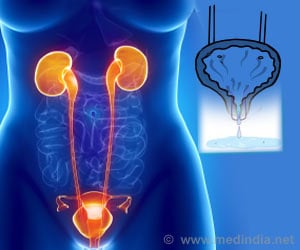A unique system to reduce medical errors and improve patient care in local hospital emergency departments was developed.
A unique system to reduce medical errors and improve patient care in local hospital emergency departments was developed by researchers from University of Cincinnati (UC)
Although guidelines for care on select disease conditions may be available in some emergency departments, the UC researchers believe they are the first to develop a comprehensive, evidence-based online system that covers numerous conditions from triage and diagnosis to treatment and discharge.“We’ve been developing a system for the last three years to establish evidence-based guidelines and forms for nurses and physicians to use for every aspect of the patient’s pathway through the emergency department,” says Stewart Wright, MD, assistant professor of emergency medicine.
The development and results of the initiative, called the Committee for Procedural Quality and Evidence-Based Practice (CPQE), are reported in the June 26 early online version of Annals of Emergency Medicine.
“Many reports have been published on patients suffering from medical care that isn’t evidence-based, or supported by clinical research that establishes the optimal approach to care for a particular disease,” says Brian Gibler, MD, chairman of UC’s department of emergency medicine. “We wanted to assess how we were doing in our emergency practice and how we could improve.”
“Our emergency physicians work in three emergency departments in Cincinnati—at University, Christ and Jewish hospitals—which makes it difficult to standardize care,” he says.
“A centralized committee like the CPQE, which focuses on quality care in the emergency department is critical to developing easily accessible, standardized guidelines and protocols, allowing us to provide care that is high quality and uniform at all three hospitals.”
Advertisement
The guidelines and summary of the literature review were then presented during a monthly, evidence-based meeting in the UC emergency medicine department for input from faculty, residents and nurses.
Advertisement
“Guidelines can be very helpful for all physicians—from new residents to those with years of experience,” says Wright. “Anyone can overlook a step in treating a condition at the end of a long shift because they’re tired.”
Physicians in the emergency departments at University, Christ and Jewish are not required to use the CPQE tools but are encouraged to do so, and even receive a scorecard based on their performance.The scorecards include core measures from the Joint Commission on Accreditation of Healthcare Organizations (JCAHO) and CPQE guidelines.
“The goal is to make physicians better, because if they find themselves below the mean for procedural complications, such as with inserting a chest tube, it will provide motivation for them to improve,” says Wright.
Wright says the scorecards also track which physicians may need more education on a particular therapy or procedure.“In addition, if there are physicians who are doing an excellent job, we want to try to emulate their practice,” Wright says.
Wright admits that although nursing staff have embraced the new focus on quality care and the use of guidelines, physicians’ compliance with using CPQE tools is low. But he’s hoping that will change as they continue trying to prove the system actually works.
“The shift from relying on memory to utilizing guidelines is challenging for most practitioners,” says Wright.“We want to prove the CPQE tools can save lives and money and improve the quality of patient care, and then we expect to be able to bring use of our site or a similar system to the national level.”
Source-Eurekalert
JAY/M







